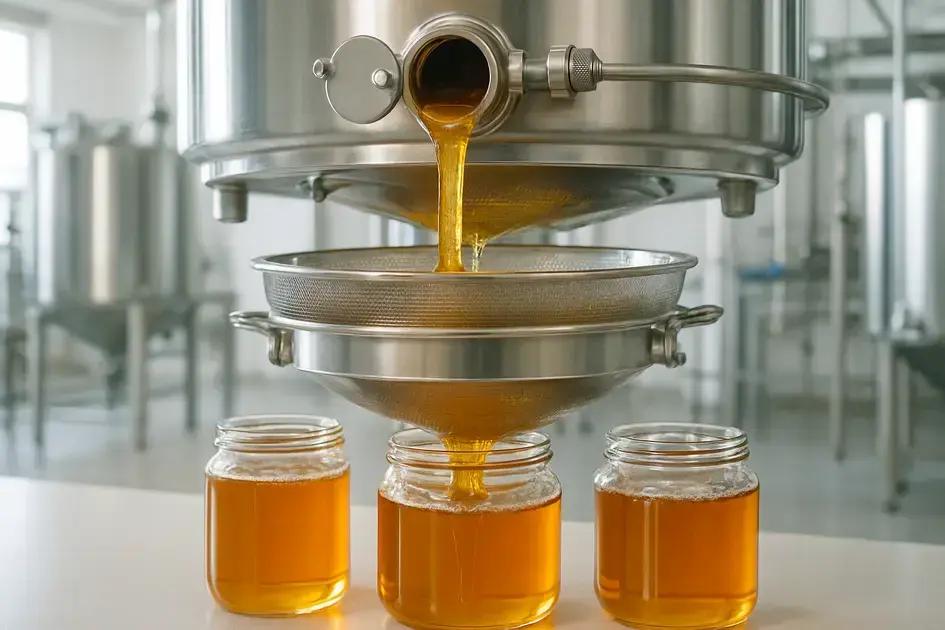=
When it comes to honey, labels like “raw” and “pure” can be confusing. Are they the same? Is one healthier? At K&A Honey, we believe informed choices start with clarity. Here’s what you need to know before your next jar lands in your pantry.
What is Raw Honey?
Raw honey is honey in its most natural state—straight from the hive, strained to remove debris but never heated above 40°C. This gentle handling preserves:
- Natural enzymes that support digestion
- Pollen and propolis with antioxidant and antimicrobial properties
- A cloudy texture due to wax particles and pollen
Raw honey is often labeled “unfiltered,” “unheated,” or “unprocessed,” and may crystallize faster due to its intact structure. It’s ideal for those seeking nutritional benefits and a true taste of the hive.
What is Pure Honey?
Pure honey means no additives—no corn syrup, no artificial flavoring. But “pure” doesn’t always mean raw. It may be:
- Filtered to remove fine particles
- Pasteurized to delay crystallization and extend shelf life
- Clear and smooth, often preferred for culinary use
Pure honey is still 100% honey, but it may lack the enzymes and pollen found in raw varieties. It’s a great option for those who value consistency and clarity in texture.
How Raw Honey is Processed and Sourced
Raw honey is processed using minimal intervention to preserve its natural enzymes, pollen, and flavor profile. Here’s a breakdown of how it’s typically handled from hive to jar:
Step-by-Step Raw Honey Processing
1. Harvesting from the Hive
- Beekeepers use smoke to gently calm the bees.
- Honeycomb frames are removed from the hive once the honey is capped (sealed with wax).
2. Uncapping the Honeycomb
- A hot knife or uncapping fork is used to remove the wax cappings that seal the honey in the comb.
3. Extracting the Honey
- Manual methods include:
- Drip extraction: Frames are placed vertically and honey drips out slowly by gravity.
- Crush and strain: The comb is crushed and the honey is strained through mesh or cloth.
- Centrifugal extraction: A honey extractor spins the frames to release honey without damaging the comb.
4. Straining (Not Filtering)
- Raw honey is strained to remove large particles like wax and dead bees.
- It is not finely filtered, so it retains pollen, propolis, and other beneficial compounds.
5. No Heating
- Raw honey is never heated above 40°C (104°F), preserving its enzymes and antioxidants.
- This also means it may crystallize faster than processed honey.
6. Bottling
- Once strained, the honey is poured directly into jars.
- It may appear cloudy or opaque due to natural particles and crystallization.
Pure honey is defined by its lack of adulteration—no added sugars, syrups, or artificial ingredients. It retains natural enzymes, antioxidants, and pollen, making it nutritionally superior to processed varieties.

Label Decoding Tips
When shopping for honey, look beyond the buzzwords:
- “Raw” = minimal processing, maximum nutrients
- “Pure” = no additives, but may be heat-treated
- “Creamed” or “Whipped” = texture-modified, not necessarily raw
- “Organic” = hive and floral sources meet organic standards
Always check for transparency in sourcing and processing. At K&A Honey, we proudly label our jars with full traceability and sensory notes—so you know exactly what you’re tasting.
🛒 Which Should You Choose?
It depends on your priorities:
| Goal | Best Choice |
|---|---|
| Nutritional benefits | Raw honey |
| Smooth texture for cooking | Pure honey |
| Local pollen for allergies | Raw, local honey |
| Long shelf life | Filtered pure honey |
Whether you’re stirring it into tea or savoring it by the spoonful, honey should be as honest as the bees that made it. At K&A Honey, we’re committed to clarity, quality, and the sensory joy of real honey.


